Why Air Force no longer has to milk
 Bashny.Net
Bashny.Net
Combat aircraft at the present time, even the most cursory examination resemble heavily armed thugs. Look at the ultra-modern Russian MiG-35 - a multipurpose fighter generation "4 ++". I mean, it's almost a fifth generation as the PAK FA, but a little before it falls short of that, however, is not a particularly destructive effect on the power of the MiG.
"Thirty-five" has on board about seven tons of weapons suspended on eight nodes garter, and that's not counting the built 1h30 mm gun GS-1500 rate of 301 rds / min. Given this equipment, as well as other characteristics of the MiG, it is quite able to intercept all existing and developed by means of air attack. Technological relevance car with enough margin.
Until this state has developed Air Combat exactly 100 years. That's right, this year's anniversary. How did a round number? Let's briefly look at the history of the evolution of combat aircraft from 1914 to 2014.
22 photo.
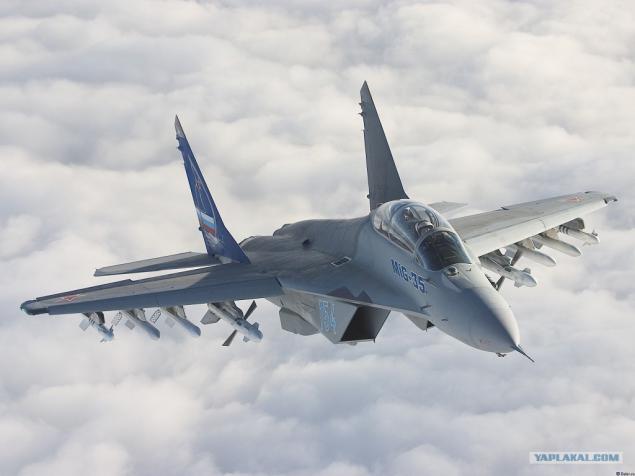
The beginning of World War II aircraft of all the belligerent countries met unarmed. Literally. At the beginning of the last century views on the prospects of development of military aircraft were not particularly optimistic. Few believed that the then, to put it mildly, is not perfect flying machines could be an effective fighting unit. However, one option was obvious to all: an airplane can be discharged on the enemy explosives, bombs and shells. Of course, in the quantities in which will allow the load, and it is at the beginning of the XX century did not exceed several tens of kilograms.
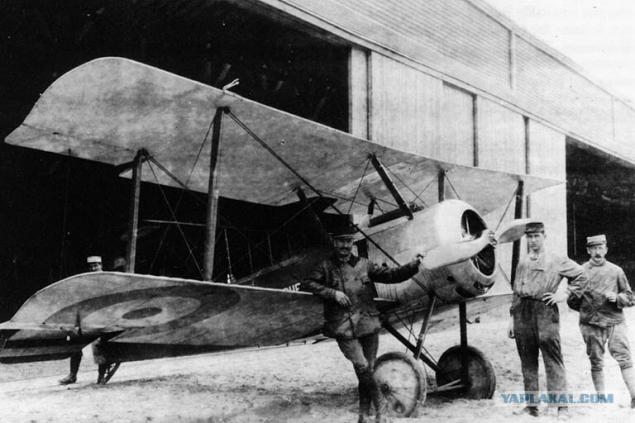
It's hard to say who first had such an idea, but in practice it was used before all Americans. January 15, 1911 in the framework of the aviation week in San Francisco "was held throwing bombs from an airplane." Do not worry, during the show no one was hurt.
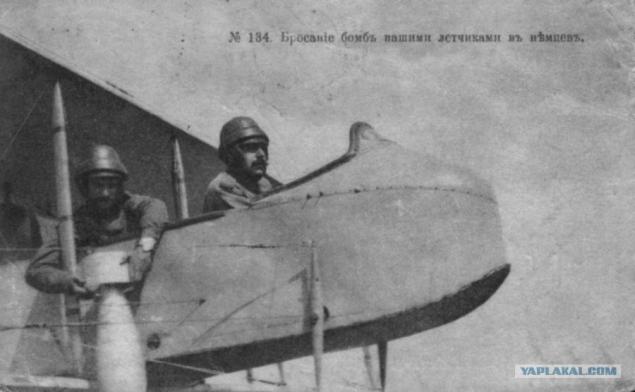
In the same battle, apparently, were the first to drop bombs from airplanes became the Italians. At least, it is known that during the Italo-Turkish war in Libya, November 1, 1911 Lieutenant Gavotti aboard "Bleriot" threw grenades 4 4 4 pounds on Turkish troops.
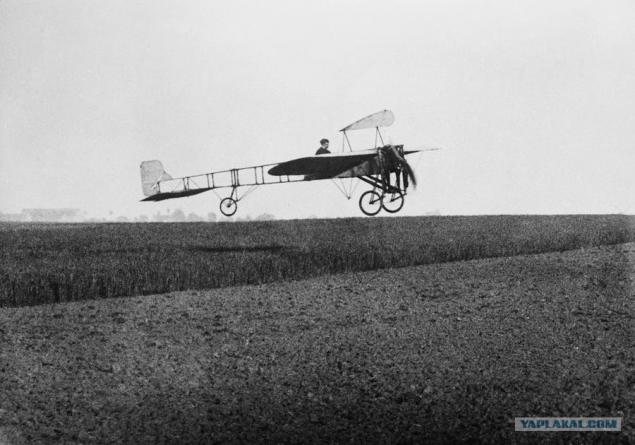
However, not enough to drop a bomb from an aircraft, it is desirable to reset the sighting. In the 1910s, attempts were made to develop a variety of sights. In the Russian Empire, by the way, too, and were quite successful. So, devices captain Tolmachev, and Lieutenant Sidorenko received most of the accolades. However, as a rule, almost all the sights at first followed the positive feedback, then the view is reversed. This occurred due to the fact that all the equipment did not include lateral wind and air resistance. At that time there was no more bombing ballistic theory, it has developed the efforts of two Russian research centers in St. Petersburg and Moscow in 1915.
In the photo - the workplace pilot observer: a bomb and a box of Molotov cocktails
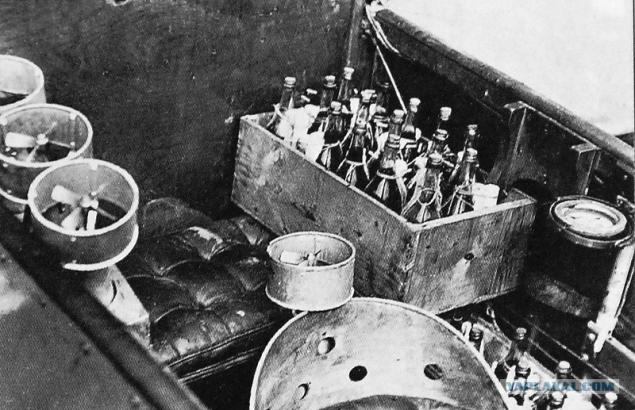
By the mid-1910s addition to the airplane bombs weighing a few pounds were known, and other kinds of shells, namely a large variety of "Airplane bullets" and "arrows", weighing 15-30, the "Arrows" all the interesting thing. They are metal rods with a pointed end and a little cross stabilizer. In general, "arrow" reminded "darts" from the game "Darts". Previously, they just appeared in the French army at the beginning of the First World War and have shown high efficiency. About them even started to compose a legend claiming that these things penetrate the rider and horse. In fact, it is known that when dropped from a height of 1 500 km arrows scattered on the area up to 2,000 square meters and one "Third Battalion, located on vacation, was put out of action a relatively small number of arrows discharged from a single airplane." By the end of 1915 on weapons airforce Russia took 9 different models of aircraft bullets and "Shooter."
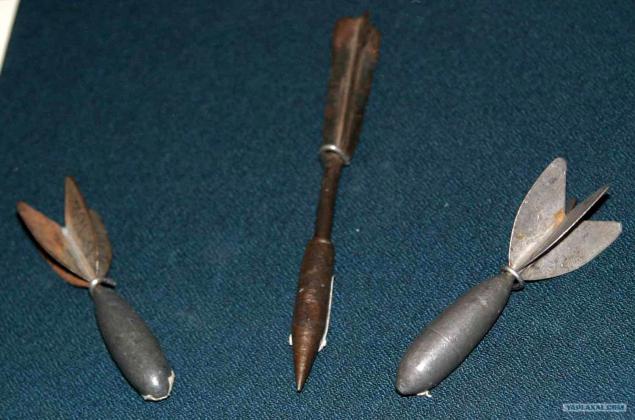
What can be reset from the aircraft at the time it was not the only weapon flying machines. In the years 1914-1915 the frontline pilots tried to adapt their own automatic weapons to conduct air combat. Despite the fact that the order of military department of airplanes armed with rifles, machine guns, "Madsen" was released after 10 days after the beginning of the war, it took quite some time to squadrons received this weapon to a word badly outdated.
In the photo - aviators 5th Army aircraft at JSC "Voisin", armed with machine guns "Maxim". April 1916 Mr.
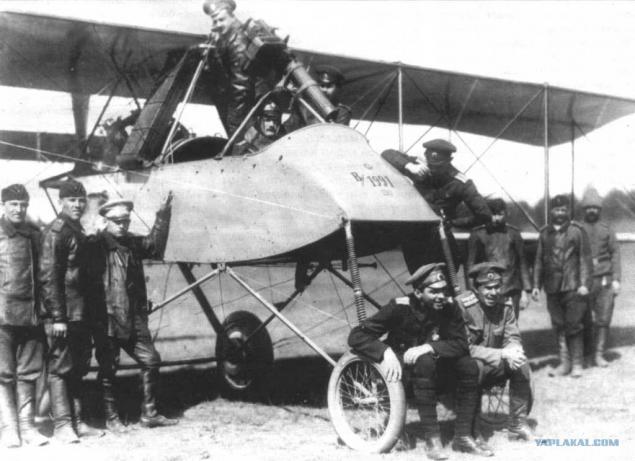
Aside from getting guns from the warehouses was another problem. They not worked out the most rational ways of installing aircraft weapons on the plane. V.M.Tkachev pilot in early 1917, wrote: "The first time put the gun on an airplane where you are more comfortable in those or other purely technical reasons and as prompted in either case, the device design data ... In general, the picture was as follows - to the system unit cleave the gun where it was possible, no matter what the rest of the fighting qualities of the airplane, and what its purpose, in the sense of the upcoming tasks ».
Until the end of World War I and has not developed consensus on the types of combat aircraft. A clear idea of bombers and fighters will appear later.

The weak point of aircraft armament of that time was aiming attack. Bombing at the then level of technology development might not be accurate at all. Although by 1915 the scientific researches in the field of ballistics allowed to go to the production of bombs with a reduced tail, slightly increased the accuracy and efficiency of the shells. Automatic weapons as special accuracy did not differ, the ring sight could not provide it to the extent necessary. Collimator sights as developed by the students of Zhukovsky in 1916 had not been taken into service, since Russia was not then factories and workshops, they are able to mass-produce.
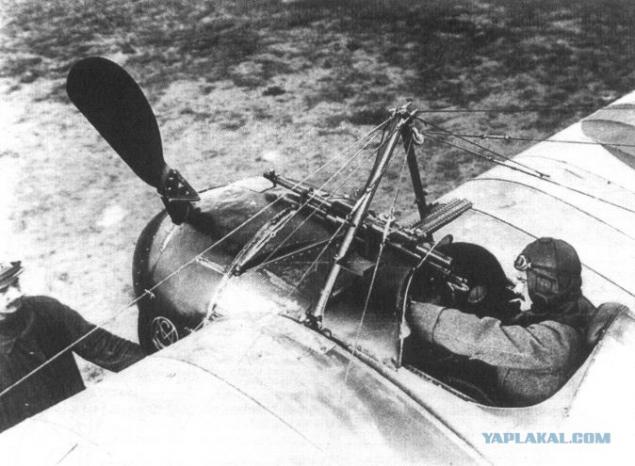
German pilots and Hanover CL II - Double wooden biplane design with good aerodynamics.
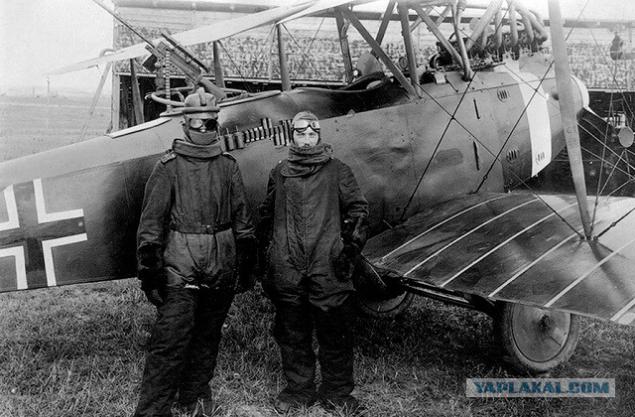
German aerostat.

Terrible German sausage.
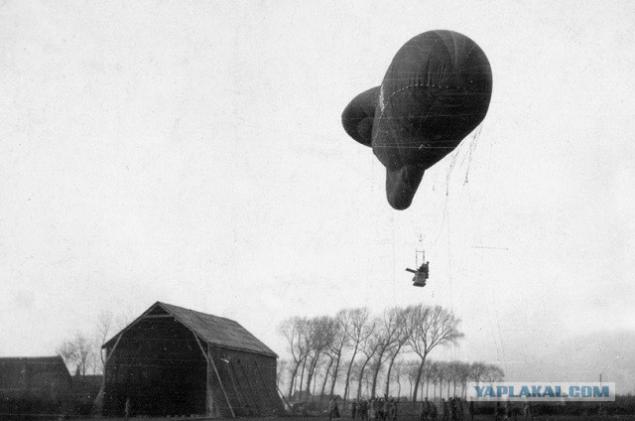
Captured German Taube monoplane.
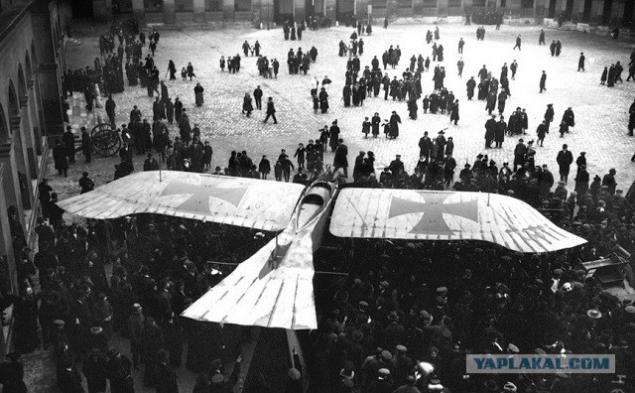
To bring down the enemy mercilessly!
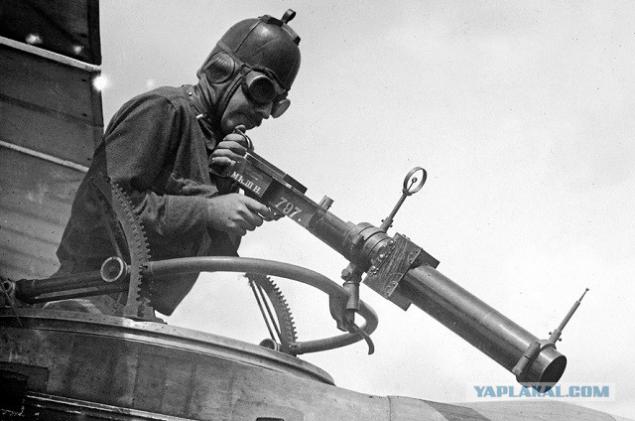
And here is the unique color photo of the First World War. In the 1915-1918 year, several photographers tried to perpetuate the war in color.
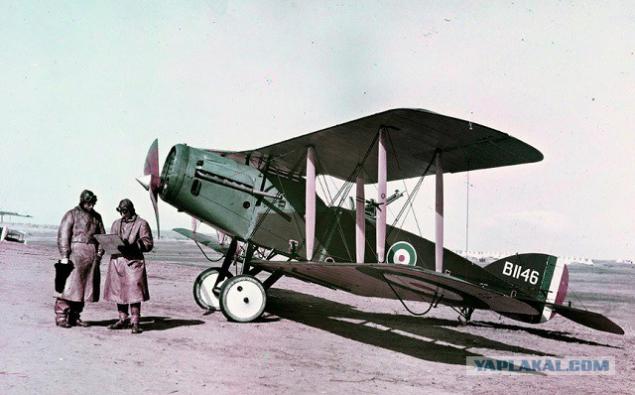
The aircraft with missiles during the First World War. The enemy will be defeated.
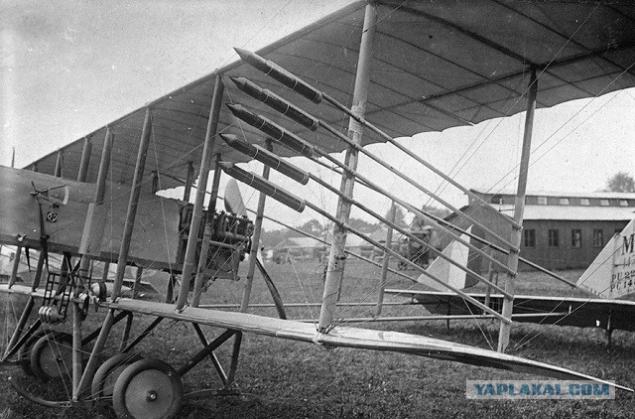
Exquisitely shot down a German plane.
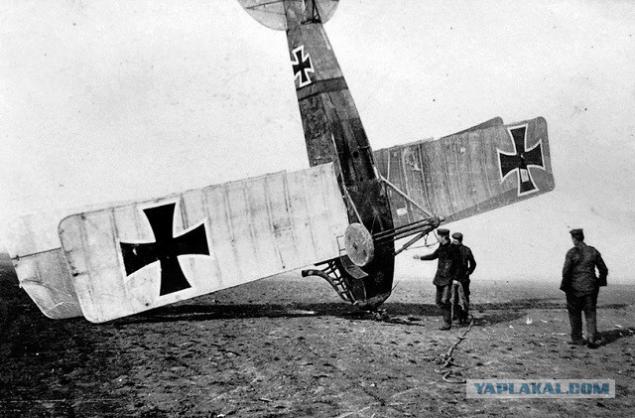
The strength and greatness of the Russian aviation - "Ilya Muromets".
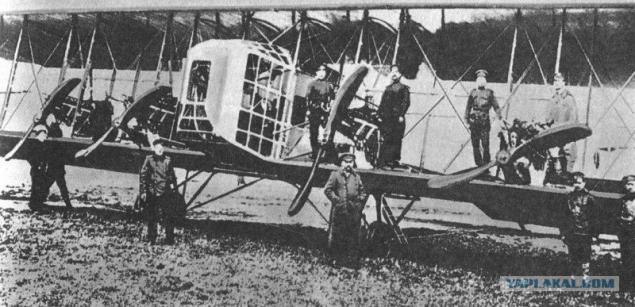
Japanese aviator, 1914.
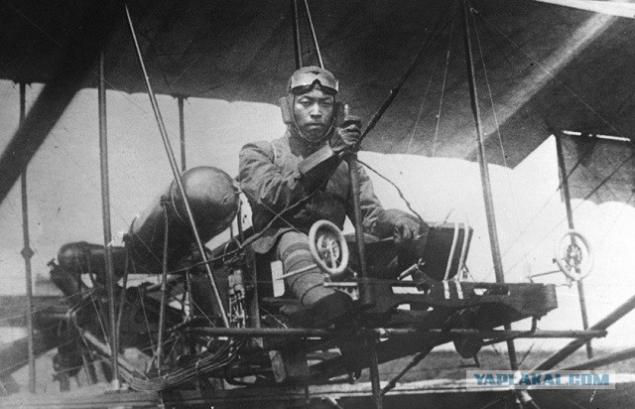
Morning debriefing.
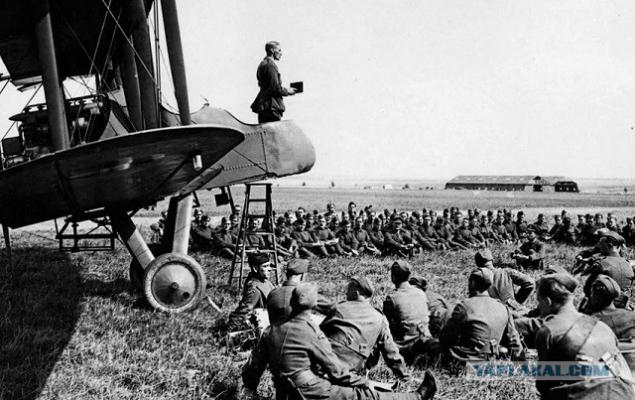
Continuity of generations. The old guard and the new.
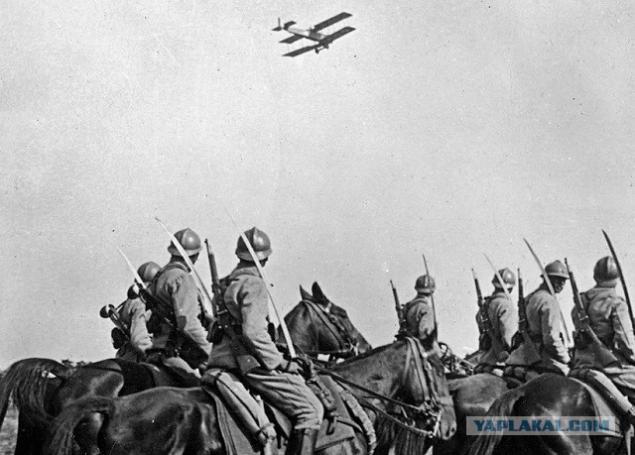
Now again we take a look at our MiG-35. Cannon GSH-301, up to six universal missile guided missiles "Air-air" to four UR short range R-73 with a heat seeker (CBC), bombs caliber up to 500 kg and a total weight of up to 6,000 kg (FAB-250 package) on four pylons; Nursi KMGU, pourer tanks and other unguided weapons class "air-surface". And most importantly, all of which can hit a target with a frightening accuracy thanks to the weapons control (VCS) and the radar system (RLS) with an active phased array antenna (APAA). Radar allows you to simultaneously track a large number of targets. This equipment is capable of detecting and capturing enemy on the water, land and air, to recognize its class, style and size, to solve navigation tasks.

I think many will be surprised to know that today 30% of the world fleet of fighters and 82% of the park have Russian radar and SUV, developed by the Russian corporation "Fazotron-NIIR". By the way, recently Concern "Radio-electronic technology '(KRET) Rostec State Corporation completed the acquisition of shares of the corporation at a rate of 35, 46%. Currently KRET has 93, 26% of the securities' Phazotron. " According to general director of Concern Nikolai Kolesov, "This will allow the Group to exercise more effective control of the company and are guaranteed to fulfill the state defense order. From 2014 to 2016 on the development of the corporation "Fazotron-NIIR" KRET send 5 billion rubles of its own funds and borrowings ».

For 100 years aviation weapons has gone from dropping bombs from airplanes to manually automatic guidance system and capture the target. Nice to know that Russia has made a great contribution to science and technology along the way.
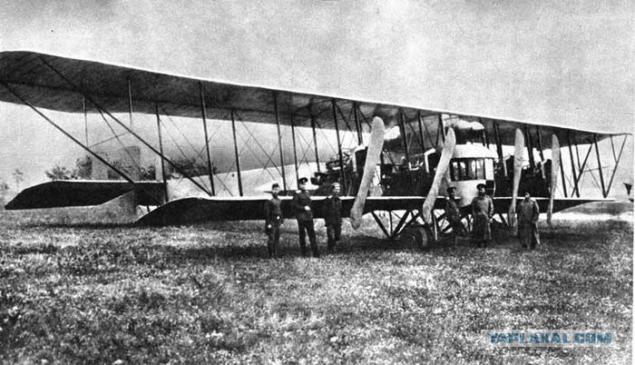
"Thirty-five" has on board about seven tons of weapons suspended on eight nodes garter, and that's not counting the built 1h30 mm gun GS-1500 rate of 301 rds / min. Given this equipment, as well as other characteristics of the MiG, it is quite able to intercept all existing and developed by means of air attack. Technological relevance car with enough margin.
Until this state has developed Air Combat exactly 100 years. That's right, this year's anniversary. How did a round number? Let's briefly look at the history of the evolution of combat aircraft from 1914 to 2014.
22 photo.

The beginning of World War II aircraft of all the belligerent countries met unarmed. Literally. At the beginning of the last century views on the prospects of development of military aircraft were not particularly optimistic. Few believed that the then, to put it mildly, is not perfect flying machines could be an effective fighting unit. However, one option was obvious to all: an airplane can be discharged on the enemy explosives, bombs and shells. Of course, in the quantities in which will allow the load, and it is at the beginning of the XX century did not exceed several tens of kilograms.

It's hard to say who first had such an idea, but in practice it was used before all Americans. January 15, 1911 in the framework of the aviation week in San Francisco "was held throwing bombs from an airplane." Do not worry, during the show no one was hurt.

In the same battle, apparently, were the first to drop bombs from airplanes became the Italians. At least, it is known that during the Italo-Turkish war in Libya, November 1, 1911 Lieutenant Gavotti aboard "Bleriot" threw grenades 4 4 4 pounds on Turkish troops.

However, not enough to drop a bomb from an aircraft, it is desirable to reset the sighting. In the 1910s, attempts were made to develop a variety of sights. In the Russian Empire, by the way, too, and were quite successful. So, devices captain Tolmachev, and Lieutenant Sidorenko received most of the accolades. However, as a rule, almost all the sights at first followed the positive feedback, then the view is reversed. This occurred due to the fact that all the equipment did not include lateral wind and air resistance. At that time there was no more bombing ballistic theory, it has developed the efforts of two Russian research centers in St. Petersburg and Moscow in 1915.
In the photo - the workplace pilot observer: a bomb and a box of Molotov cocktails

By the mid-1910s addition to the airplane bombs weighing a few pounds were known, and other kinds of shells, namely a large variety of "Airplane bullets" and "arrows", weighing 15-30, the "Arrows" all the interesting thing. They are metal rods with a pointed end and a little cross stabilizer. In general, "arrow" reminded "darts" from the game "Darts". Previously, they just appeared in the French army at the beginning of the First World War and have shown high efficiency. About them even started to compose a legend claiming that these things penetrate the rider and horse. In fact, it is known that when dropped from a height of 1 500 km arrows scattered on the area up to 2,000 square meters and one "Third Battalion, located on vacation, was put out of action a relatively small number of arrows discharged from a single airplane." By the end of 1915 on weapons airforce Russia took 9 different models of aircraft bullets and "Shooter."

What can be reset from the aircraft at the time it was not the only weapon flying machines. In the years 1914-1915 the frontline pilots tried to adapt their own automatic weapons to conduct air combat. Despite the fact that the order of military department of airplanes armed with rifles, machine guns, "Madsen" was released after 10 days after the beginning of the war, it took quite some time to squadrons received this weapon to a word badly outdated.
In the photo - aviators 5th Army aircraft at JSC "Voisin", armed with machine guns "Maxim". April 1916 Mr.

Aside from getting guns from the warehouses was another problem. They not worked out the most rational ways of installing aircraft weapons on the plane. V.M.Tkachev pilot in early 1917, wrote: "The first time put the gun on an airplane where you are more comfortable in those or other purely technical reasons and as prompted in either case, the device design data ... In general, the picture was as follows - to the system unit cleave the gun where it was possible, no matter what the rest of the fighting qualities of the airplane, and what its purpose, in the sense of the upcoming tasks ».
Until the end of World War I and has not developed consensus on the types of combat aircraft. A clear idea of bombers and fighters will appear later.

The weak point of aircraft armament of that time was aiming attack. Bombing at the then level of technology development might not be accurate at all. Although by 1915 the scientific researches in the field of ballistics allowed to go to the production of bombs with a reduced tail, slightly increased the accuracy and efficiency of the shells. Automatic weapons as special accuracy did not differ, the ring sight could not provide it to the extent necessary. Collimator sights as developed by the students of Zhukovsky in 1916 had not been taken into service, since Russia was not then factories and workshops, they are able to mass-produce.

German pilots and Hanover CL II - Double wooden biplane design with good aerodynamics.

German aerostat.

Terrible German sausage.

Captured German Taube monoplane.

To bring down the enemy mercilessly!

And here is the unique color photo of the First World War. In the 1915-1918 year, several photographers tried to perpetuate the war in color.

The aircraft with missiles during the First World War. The enemy will be defeated.

Exquisitely shot down a German plane.

The strength and greatness of the Russian aviation - "Ilya Muromets".

Japanese aviator, 1914.

Morning debriefing.

Continuity of generations. The old guard and the new.

Now again we take a look at our MiG-35. Cannon GSH-301, up to six universal missile guided missiles "Air-air" to four UR short range R-73 with a heat seeker (CBC), bombs caliber up to 500 kg and a total weight of up to 6,000 kg (FAB-250 package) on four pylons; Nursi KMGU, pourer tanks and other unguided weapons class "air-surface". And most importantly, all of which can hit a target with a frightening accuracy thanks to the weapons control (VCS) and the radar system (RLS) with an active phased array antenna (APAA). Radar allows you to simultaneously track a large number of targets. This equipment is capable of detecting and capturing enemy on the water, land and air, to recognize its class, style and size, to solve navigation tasks.

I think many will be surprised to know that today 30% of the world fleet of fighters and 82% of the park have Russian radar and SUV, developed by the Russian corporation "Fazotron-NIIR". By the way, recently Concern "Radio-electronic technology '(KRET) Rostec State Corporation completed the acquisition of shares of the corporation at a rate of 35, 46%. Currently KRET has 93, 26% of the securities' Phazotron. " According to general director of Concern Nikolai Kolesov, "This will allow the Group to exercise more effective control of the company and are guaranteed to fulfill the state defense order. From 2014 to 2016 on the development of the corporation "Fazotron-NIIR" KRET send 5 billion rubles of its own funds and borrowings ».

For 100 years aviation weapons has gone from dropping bombs from airplanes to manually automatic guidance system and capture the target. Nice to know that Russia has made a great contribution to science and technology along the way.

Tags
See also
Why all this way and not another? And because
Peregrine. How does this work?
Between North and South Korea is much more and much less than the total
One day of general aviation
Saga of generations. Why is the Su-27 is superior to the F-15
"Two axes" Nikolai Drozdov
Multitest multivarok: what to buy IT-person, if you want pilaf and borscht
For Ponto - why not pay
What milk is right for you? Compare 10 types
Map Creator — relief map, the age of which 120 million years
















